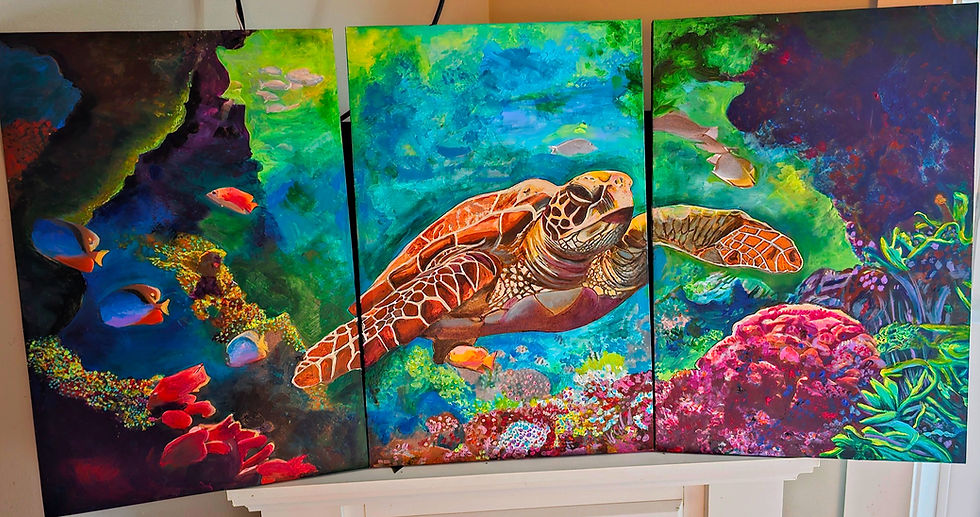End of the Octopus Line
- Karen Nichols
- Apr 6, 2023
- 2 min read
Updated: Apr 28, 2023

I'm finishing the last of my current octopus series this week. This is another behemoth: 36"x24" mixed media on stretched canvas.
In addition to vintage ephemera and fun snips from the New Yorker, I also used some handmade monoprints (gelli prints). I also included a couple of excerpts from The Octopus by Frank Norris.
Norris' octopus is not my fave cephalopod, but rather was the first part of an uncompleted trilogy, The Epic of the Wheat. It describes the wheat industry in California, and the conflicts between wheat farmers and a rail company which resulted in the 1880 Mussel Slough Tragedy involving the Southern Pacific Railroad. In the novel he depicts the tensions between the railroad and the ranchers.

["The Retribution Comet" – Editorial cartoon published in The Wasp, July 8, 1881, depicting a comet with a skull about to strike railroad tycoons Leland Stanford and Collis Potter Huntington, shown robbing the graves of the Mussel Slough victims.]
The Mussel Slough Tragedy took place in the county where I grew up in the southern San Joaquin Valley, so it resonated with me. I'd never heard about the Mussel Slough Tragedy, so I enjoyed the local history. In college, I studied Norris, starting with McTeague: A Story of San Francisco (1899), followed by The Octopus: A Story of California (1901), and The Pit (1903).

I even have a first edition of Norris' The Pit, the story of Chicago and the Board of Trade. I hold a special place in my heart for The Pit -- when I worked on a trading desk, I spent my days on phones to the traders in the pit, and spent time in the pit myself (except for that one time the guard wouldn't admit me because the slit in my skirt would divert traders' attention and stop trading, so I spent the afternoon drinking in the member's lounge.)
Interestingly, at that time (before everything was computerized), commerce took place in the pit exactly as it had in the book: chaos at a volume that goes to eleven. And this piece is a little chaotic, a little loud.

For this work, I used buttons and beads for the suction cups, plus a couple of surprises: coins, shells, typewriter keys, bingo tokens.
So what am I going for? When I do these mixed media works that utilize ephemera, I'm trying to create a work that will invite exploration. My previous hospitals had lovely art collections, and I remember several collages that I'd return to and spend a lot of time gazing at them, with bits of ephemera that could delight like Easter eggs. And so, I try to distribute "Easter egg delights" in my collages, finding funny text snippets and imagery that you might not really see on first viewing, but catch on the 20th viewing. Or the 40th.








Comments